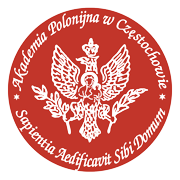SPECIFICS OF MODAL VERBS IN INTERCULTURAL ENGLISH COMMUNICATION: IMPLICATIONS FOR COMMUNICATIVE COMPETENCE DEVELOPMENT
Abstract
This article examines the pragmatic and linguo-functional role of modal verbs in English-language intercultural communication and their implications for the development of communicative competence. Modality, as a universal and culture-sensitive phenomenon, serves not only as a grammatical category but also as a key pragmatic tool for expressing speaker stance, intention, politeness, and interpersonal positioning. The study integrates theoretical perspectives from pragmatics, contrastive linguistics, and intercultural communication to analyze how modal verbs such as can, may, must, should, might, and would function across intercultural contexts. Empirical examples drawn from real-life intercultural exchanges, corpora, and classroom interactions demonstrate both pragmatic divergences and miscommunication patterns due to culturally encoded modal usage. The paper argues for the inclusion of pragmalinguistic training into English as a Foreign Language (EFL) curricula with a focus on modal variation and awareness-raising strategies. It concludes with pedagogical recommendations on enhancing learners’ pragmatic competence through focused modality-based instruction in communicative and intercultural competence development.
References
2. Biber, D., Johansson, S., Leech, G., Conrad, S., Finegan, E. (1999). Longman grammar of spoken and written English. London: Longman. [in English]
3. Canale, M., Swain, M. (1980). Theoretical bases of communicative approaches to second language teaching and testing. Applied Linguistics, 1(1), 1–47. https://doi.org/10.1093/applin/I.1.1
4. Carter, R., McCarthy, M. (2006). Cambridge grammar of English: A comprehensive guide. Cambridge: Cambridge University Press. [in English]
5. Crystal, D. (2010). The Cambridge encyclopedia of language (3rd ed.). Cambridge: Cam- bridge University Press. [in English]
6. Holmes, J. (2013). An introduction to sociolinguistics (4th ed.). London: Routledge. https://doi.org/10.4324/9781315838250
7. House, J. (2002). Pragmatic competence in English as a lingua franca: A research agenda. TESOL Quarterly, 36(1), 145–152. https://doi.org/10.2307/3588364
8. Hyland, K. (2005). Metadiscourse: Exploring interaction in writing. London: Continuum. [in English]
9. Leech, G. (1987). Meaning and the English verb (2nd ed.). London: Longman. [in English]
10. Modiano, M. (2000). Linguistic imperialism, cultural integrity, and EIL. ELT Journal, 54(4), 339–346. https://doi.org/10.1093/elt/54.4.339
11. Paltridge, B. (2020). Discourse analysis: An introduction (3rd ed.). London: Bloomsbury Academic. [in English]
12. Searle, J. R. (1979). Expression and meaning: Studies in the theory of speech acts. Cambridge: Cambridge University Press. [in English]
13. Taguchi, N. (2011). Teaching pragmatics: Trends and issues. Annual Review of Applied Linguistics, 31, 289–310. https://doi.org/10.1017/S0267190511000018
14. Yule, G. (2016). The study of language (6th ed.). Cambridge: Cambridge University Press. [in English]
Abstract views: 143 PDF Downloads: 52







